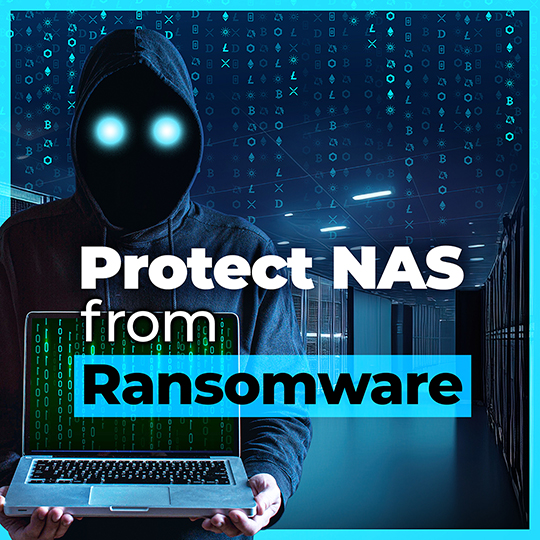In recent years, ransomware attacks have become increasingly common, and they can be incredibly damaging to individuals and businesses alike. One of the most vulnerable targets for ransomware attacks is a network-attached storage (NAS) device.1 NAS devices are used to store large amounts of data, making them an attractive target for cybercriminals. In this blog post, we will discuss how to protect your NAS from ransomware attacks.
-
Backup Your Data Regularly
Backing up your data regularly is the best way to protect yourself from ransomware attacks. If your NAS device is infected with ransomware, having a recent backup of your data will allow you to restore your files without paying the ransom. It is essential to make sure that your backup is stored on a separate device or in a cloud storage service like CloudBacko that is not connected to your NAS device. This will prevent the backup from being infected with ransomware along with your NAS device. For details, please click Synology and QNAP backup.
-
Keep Your Software Up to Date
Keeping your NAS software up to date is critical in protecting it from ransomware attacks. Make sure that you install any updates or patches as soon as they become available. These updates often include security improvements that can help prevent ransomware attacks. It is also a good idea to use antivirus software on your NAS device to detect and remove any malware that may be present.
-
Limit Access to Your NAS Device
Limiting access to your NAS device is an essential step in protecting it from ransomware attacks. Only allow authorized users to access your NAS device and make sure that they use strong passwords. It is also important to disable any services that are not necessary for your users. For example, if you do not need remote access to your NAS device, disable the remote access service. This will limit the attack surface of your NAS device and make it more difficult for cybercriminals to gain access to it.
Ransomware attacks can be devastating, but there are steps you can take to protect your NAS device from them. Backup your data regularly, keep your software up to date, and limit access to your NAS device. These steps will help you keep your data safe and prevent cybercriminals from holding it for ransom. By taking these precautions, you can avoid the stress and financial burden of a ransomware attack. CloudBacko backup by your side. Download now.
Source:
1) QNAP Zero-Days Leave 80K Devices Vulnerable to Cyberattack
https://www.darkreading.com/vulnerabilities-threats/qnap-zero-days-80k-devices-vulnerable-cyberattack
